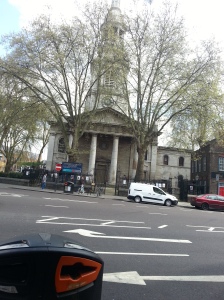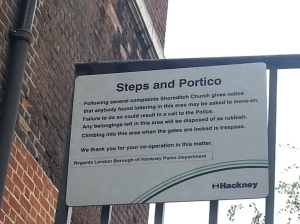Today is the first day of the rest of my life. As is any day, to be honest. For the generation before me, I am at the age when you should be counting down – ten years, nine years, eight – to claiming your state pension. Whereas I am embarking on a life of insecurity, hustle and potential impecunity.
Friday was my last day at the wonderful Spread The Word, in Deptford, working with London’s writers. (If you’re ever short of a writing prompt, can I recommend Deptford Market? The clash of bike speakers between the Rasta guy cycling by booming dub and the old white guy blasting Rainbow’s ‘Since You’ve Been Gone’ is a play waiting to happen.)
From tomorrow, no more Pay As You Earn tax deductions. No more prepaid National Insurance. No more contractual hours.
Why am I doing this? It’s time. I have wanted to write all my life, but only now feel able to be a writer. Nearly every job I have had since teenage years has fed into my writing, from a two-week stint cleaning St Francis psychiatric hospital (previously Brighton County Borough Asylum) where my parents, stepdad and virtually everyone else I knew worked to my jobs in London with families involved with social services or affected by imprisonment. 
The stint in Brook young people’s sexual health clinics was particularly insightful and rather useful for Indigo Donut …
But also, I’ve had a chance to reflect on Orangeboy and the potential for Indigo Donut. I wrote about subjects I care deeply about and they have given me a springboard and platform to explore those topics in different ways with young people – creative, innovative and knowledgeable young people, that never fail to impress me.
So what’s next?
The pragmatic stuff – sorting out income and expenditure spreadsheets, being way more rigorous about keeping and storing receipts and organising an effective invoicing system. Oh, the excitement.
I need a proper website. I’ve been putting that one on hold for a while. A horrible amount of while. But at the moment people contact me in different ways – via my agent or Sarah, my publicist, at Hachette. Some come directly via Twitter, Facebook or email. It’s hard to keep up. I need to be way more strategic.
Hachette have offered to help me put together a school leaflet. It’s time, it’s time.
And this week – up to Bath tonight for two school events in Bath and Bristol tomorrow supporting the Bath Literature Festival. Then a meeting on Tuesday with the fabulous Hackney Museum to talk about how Orangeboy, a Hackney-set book about a young, black geeky guy who gets pulled into an underworld, can be used as a discussion point for a project with local men. 
There’s a meeting with my agent, Caroline Sheldon, to discuss freelance opportunities – we are both excited about the possibilities that lie ahead. And a rather wonderful opportunity to talk Black writing and activism in Writing in the Age of Black Lives Matter at Brixton Library on 4th October with Patrick Vernon and Jackee Holder.
I also need to do a bit of writing …
So, come on this new journey with me! I’ll be keeping you posted.
Patrice x


